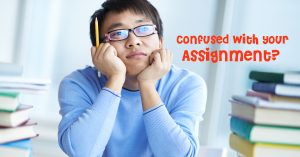From a neuroscience perspective, there are three main principles of UDL learning. These include providing multiple means of representation, providing multiple means of action and expression and providing multiple means of engagement. The principle of providing multiple means of representation is also referred to as the “what” of learning (NCUDL, 2015). Learners perceive and comprehend the information presented to them in different ways. For instance, those with sensory and learning disabilities and those who come from different language and cultural backgrounds have unique ways of approaching content. Others have the capacity to grab information more efficiently through auditory or visual means as opposed to printed text. Moreover, learning and transfer of learning takes place when multiple representations are used because they allow students to make connections within and between concepts (NCUDL, 2015). In essence, there is no one means of representation that is considered to be the most optimal for all learners. For this reason, students should be given options for representation.
The second principle entails the “how’ of learning. It stipulates that the way in which learners navigate a learning environment and express what they know differs from one individual to another. For instance, those who suffer from significant movement impairments such as cerebral palsy, those with language barriers and those with organizational and strategic abilities have the capacity to express themselves better in written text compared to speech. Here, it can also be concluded that it is essential to provide options for action and expression.
Finally, providing multiple means of engagement, which is also referred to as the “why” of learning recognizes affect as a crucial aspect of learning and highlights the fact that learners differ in the ways through which they can be motivated or engaged to learn. Individual variation in affect is influenced by a variety of factors including culture, neurology, subjectivity, personal relevance and background knowledge. While some learners are highly engaged by novelty and spontaneity, others are frightened and disengaged by these aspects opting to pursue strict routines. Moreover, while some authors prefer to work in groups others prefer to work alone. On the bottom line, there is no specific means of engagement that can be deemed to be optimal for all learners in all contexts and as such, it is essential to provide multiple options for engagement.
From the foregoing, it is evident that UDL actually minimizes barriers and maximizes learning for diverse learners. Traditional learning environments, on the other hand, utilize a “one size fits all” curriculum that more often than not fails to address all students. To successfully transition from this mode of learning to UDL, instructors should appreciate the fact that the way people learn is as unique as their fingerprints (Ashley, 2015). In this regard, classrooms should be diversified in terms of learning styles, strategies, ability and other cultural, racial and other personal characteristics.
UDL essentially provides a framework for addressing student diversity and creating a flexible curriculum that supports participation, access and progress for all learners (Meo, 2008). This framework is universal and entails instructional methods, goals, material, assessment, and takes advantage of technologies to accommodate differences between learners. A universal curriculum that can be understood and utilized by everyone provides learning opportunities for individuals with different needs, wants, desires and levels of functioning. Consequently, flexible learning environments assist learners to overcome barriers inherent in curriculum interactions rather than the learners themselves. They also facilitate flexible ways of demonstrating knowledge and understanding.
References
Ashley, J. (2015, July 26). Using UDL Principles in the Teaching of Sociology. Retrieved from http://bookbuilder.cast.org/view_print.php?book=57383
Meo, G. (2008). Curriculum planning for all learners: Applying Universal Design for Learning (UDL) to a high school reading comprehension program. . Prevening School Failure,, 21-30.
National Center on Universal Design for learning (2015), The three principles of learning, retrieved from: http://www.udlcenter.org/aboutudl/whatisudl/3principles

Thanks for taking a look at our sample papers
Do you need any help with your assignment?
Our aim is to help you get the best grades for your Coursework.
We are very confident in our quality of work that we offer you 100% Money back guarantee
Header Button Label: Get StartedGet Started